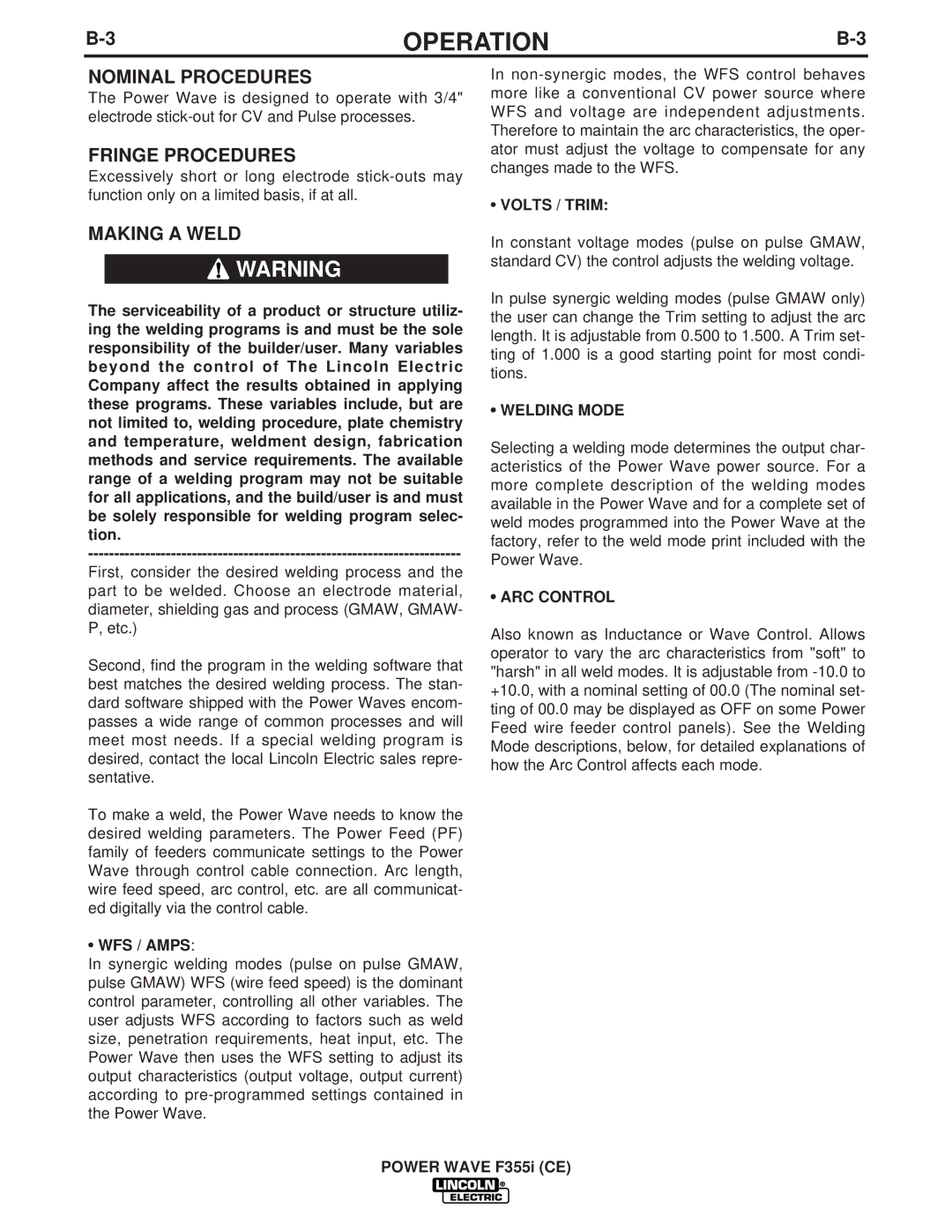
OPERATION | ||
|
|
|
NOMINAL PROCEDURES
The Power Wave is designed to operate with 3/4" electrode
FRINGE PROCEDURES
Excessively short or long electrode
MAKING A WELD
![]() WARNING
WARNING
The serviceability of a product or structure utiliz- ing the welding programs is and must be the sole responsibility of the builder/user. Many variables beyond the control of The Lincoln Electric Company affect the results obtained in applying these programs. These variables include, but are not limited to, welding procedure, plate chemistry and temperature, weldment design, fabrication methods and service requirements. The available range of a welding program may not be suitable for all applications, and the build/user is and must be solely responsible for welding program selec- tion.
First, consider the desired welding process and the part to be welded. Choose an electrode material, diameter, shielding gas and process (GMAW, GMAW- P, etc.)
Second, find the program in the welding software that best matches the desired welding process. The stan- dard software shipped with the Power Waves encom- passes a wide range of common processes and will meet most needs. If a special welding program is desired, contact the local Lincoln Electric sales repre- sentative.
To make a weld, the Power Wave needs to know the desired welding parameters. The Power Feed (PF) family of feeders communicate settings to the Power Wave through control cable connection. Arc length, wire feed speed, arc control, etc. are all communicat- ed digitally via the control cable.
•WFS / AMPS:
In synergic welding modes (pulse on pulse GMAW, pulse GMAW) WFS (wire feed speed) is the dominant control parameter, controlling all other variables. The user adjusts WFS according to factors such as weld size, penetration requirements, heat input, etc. The Power Wave then uses the WFS setting to adjust its output characteristics (output voltage, output current) according to
In
•VOLTS / TRIM:
In constant voltage modes (pulse on pulse GMAW, standard CV) the control adjusts the welding voltage.
In pulse synergic welding modes (pulse GMAW only) the user can change the Trim setting to adjust the arc length. It is adjustable from 0.500 to 1.500. A Trim set- ting of 1.000 is a good starting point for most condi- tions.
•WELDING MODE
Selecting a welding mode determines the output char- acteristics of the Power Wave power source. For a more complete description of the welding modes available in the Power Wave and for a complete set of weld modes programmed into the Power Wave at the factory, refer to the weld mode print included with the Power Wave.
•ARC CONTROL
Also known as Inductance or Wave Control. Allows operator to vary the arc characteristics from "soft" to "harsh" in all weld modes. It is adjustable from
